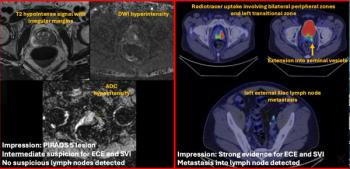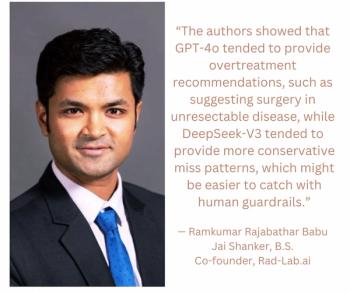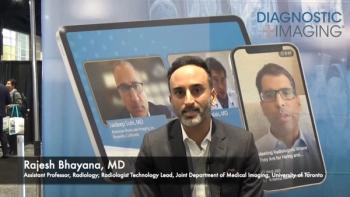
AI Tool Scores COVID-19 Lung Infection Severity
Siamese neural network can predict intubation and which patients were likely to die within three days of hospital admission.
A newly developed artificial intelligence (AI) algorithm could be a COVID-19 triage and workflow optimization tool. New research has determined it can accurately assess the severity of lung disease on chest X-rays, according to a recently published study.
Despite being limited in its ability to detect COVID-19-related abnormalities, chest X-ray can play a role in determining how severe a patient’s pulmonary infection is. Now, in an article published July 22 in
According to the team, led by Matthew Li, M.D., a radiology resident at MGH, and Jayashree Kalpathy-Cramer, Ph.D., associate professor of radiology at HMS, the PXS scores are similar to those provided by radiologists. It is possible, therefore, they said, that, among other uses, providers could use the scores to predict whether a patient might need intubation or if they were likely to die within three days of hospital admission.
“PXS score can potentially be used to improve existing and new COVID-19 machine learning models that account for other variables like vital signs, lab values, and co-morbidities,” the team wrote. “Other potential applications include radiologist workflow optimization, where [chest X-rays] with more severe findings can be interpreted earlier, and hospital resource management, where the PXS score can help with resource allocation, such as prediction of future ventilator need.”
To determine the efficacy of the algorithm, the team pre-trained it on approximately 160,000 anterior-posterior images and employed transfer learning on 314 chest X-rays from COVID-19 positive patients. Three radiologists – two with completed thoracic fellowship training and one still in training – gave the COVID-19 images modified Radiographic Assessment of Lung Edema (mRALE) scores from 0 to 24. A zero score indicated no consolidation or ground-glass opacity, and a 24 score denoted complete consolidation in both lungs.
Additionally, they, then, assessed the tool on another internal dataset that included 154 images and an external one of 113 images.
Based on this analysis, the team determined that – alongside the correlation with radiologist findings and prediction about intubation and mortality – the network could also have other uses. Overall, the team said, it is likely possible for providers to quickly scale and implement the PXS scoring even after the pandemic. With further validation, PXS could have additional application with pulmonary edema, interstitial lung disease, and other infections.
Newsletter
Stay at the forefront of radiology with the Diagnostic Imaging newsletter, delivering the latest news, clinical insights, and imaging advancements for today’s radiologists.




























